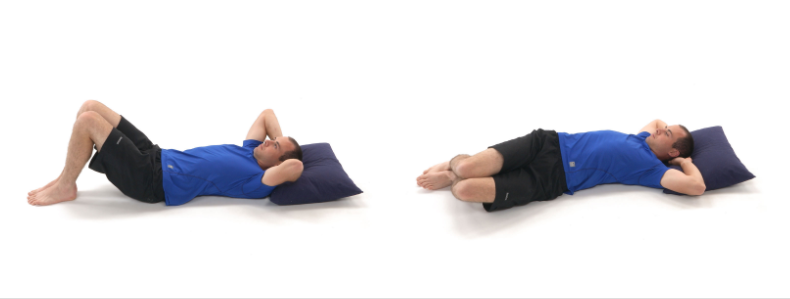A Comprehensive Guide to Hip Mobility for Back Pain Relief
Written on
Chapter 1: Understanding the Connection Between Hips and Back Pain
Back pain can be challenging to manage, yet certain foundational principles apply universally. A simple yet often overlooked approach to rehabilitation involves increasing hip mobility. Since the hips and lower back are closely linked, limited movement in one area can adversely affect the other.
Through my experience as a kinesiologist, I have observed that many patients suffering from severe back pain share a common characteristic: restricted hip mobility. By introducing basic movement patterns aimed at loosening the hips, I frequently see a corresponding release in lower back tension. While this remedy may not be universally effective, it’s surprising how often this chain reaction occurs in my practice.
The beauty of this training method lies in its accessibility; the movements can be performed with minimal effort and are suitable for individuals of all fitness levels. Are you prepared to streamline your rehabilitation process and move your body in a more natural manner? Let’s explore.
Section 1.1: Mastering Hip Mobility to Alleviate Back Pain
One primary reason hip mobility plays a crucial role in relieving lower back pain is the quadratus lumborum (QL). Although it’s a fundamental component of both the back and deep core, the QL often takes a backseat to more visually prominent muscles like the obliques and rectus femoris.
Originating at the upper hips and connecting to various lumbar spine sections and ribs, the QL serves multiple functions. It stabilizes the trunk, allows for spine extension and lateral rotation, and assists in lateral pelvic tilting, core stabilization, and even breathing. When viewed from a broader perspective, it’s clear that the QL is vital for maintaining posture and facilitating load transfer between the upper and lower body.
The QL, however, prefers not to remain still for extended periods. Constant contraction during prolonged sitting can make it vulnerable to discomfort. While not every case of back pain can be directly linked to inactive tissues, keeping these muscles engaged is essential for promoting a pain-free, functional lifestyle. Movement is key to muscle happiness!
Below, I’ll outline three exercises designed to enhance hip mobility. We’ll start with two activation exercises followed by a pivotal movement that I believe is essential for long-term lower back pain relief. Always listen to your body and avoid pushing through any pain. If you have a history of chronic conditions or serious injuries, consult a healthcare professional before starting.
Subsection 1.1.1: Warm-Up Exercise 1: Knee Wag

Application: 10–15 repetitions per side
Instructions: Begin lying on your back with knees bent at about 90 degrees. Raise your arms behind your head and gently rock your knees from side to side. Start with a smaller range of motion and progressively increase it as you warm up. This exercise effectively promotes mobility in the lower back and pelvis.
Subsection 1.1.2: Warm-Up Exercise 2: Lying Adductor Squeeze

Application: 10–15 repetitions
Instructions: Lie on your back and place a rolled towel or pillow between your knees. With each exhale, squeeze your knees together to engage your adductor muscles, holding for 3–5 seconds. This action recruits additional muscle groups while ensuring your lower back remains in a comfortable position. Aim to subtly increase the intensity with each contraction.
Section 1.2: Core Exercise of the Day: Pelvic Clock

Application: 1–2 minutes
Instructions: Lie on your back with knees bent as shown in the image. Place your hands near your pelvis to feel its movement. Shift your pelvis to various positions as if on an imaginary clock, ensuring motion in the front/back, side/side, and horizontal planes. If that feels complex, simply perform figure eights with your pelvis to access its full range of motion while keeping the rest of your body still.
Although this may seem like a simple exercise, it provides the precise stimulus your hips and lower back need to alleviate tightness and stiffness, promoting greater functionality. Aim to do this daily for optimal results!
Chapter 2: Embracing Hip Mobility for Lasting Relief
If you’re seeking lasting relief from back pain, enhancing hip mobility will be immensely beneficial. This improvement activates often-neglected muscles, such as the quadratus lumborum, giving you the best chance for a swift recovery. The great news? You can achieve this with just three minutes of daily practice focused on these straightforward mobility exercises. Here’s to improving your functionality and bidding farewell to persistent back pain!
This video titled "The One Mobility Move to Rule Them All" illustrates a key mobility exercise designed to enhance hip flexibility and promote overall body movement.
The second video, "Quick Hip Mobility Routine! (FOLLOW ALONG)," provides a guided routine for improving hip mobility, suitable for all fitness levels.
You’ve got this!
-David Liira, Kinesiologist